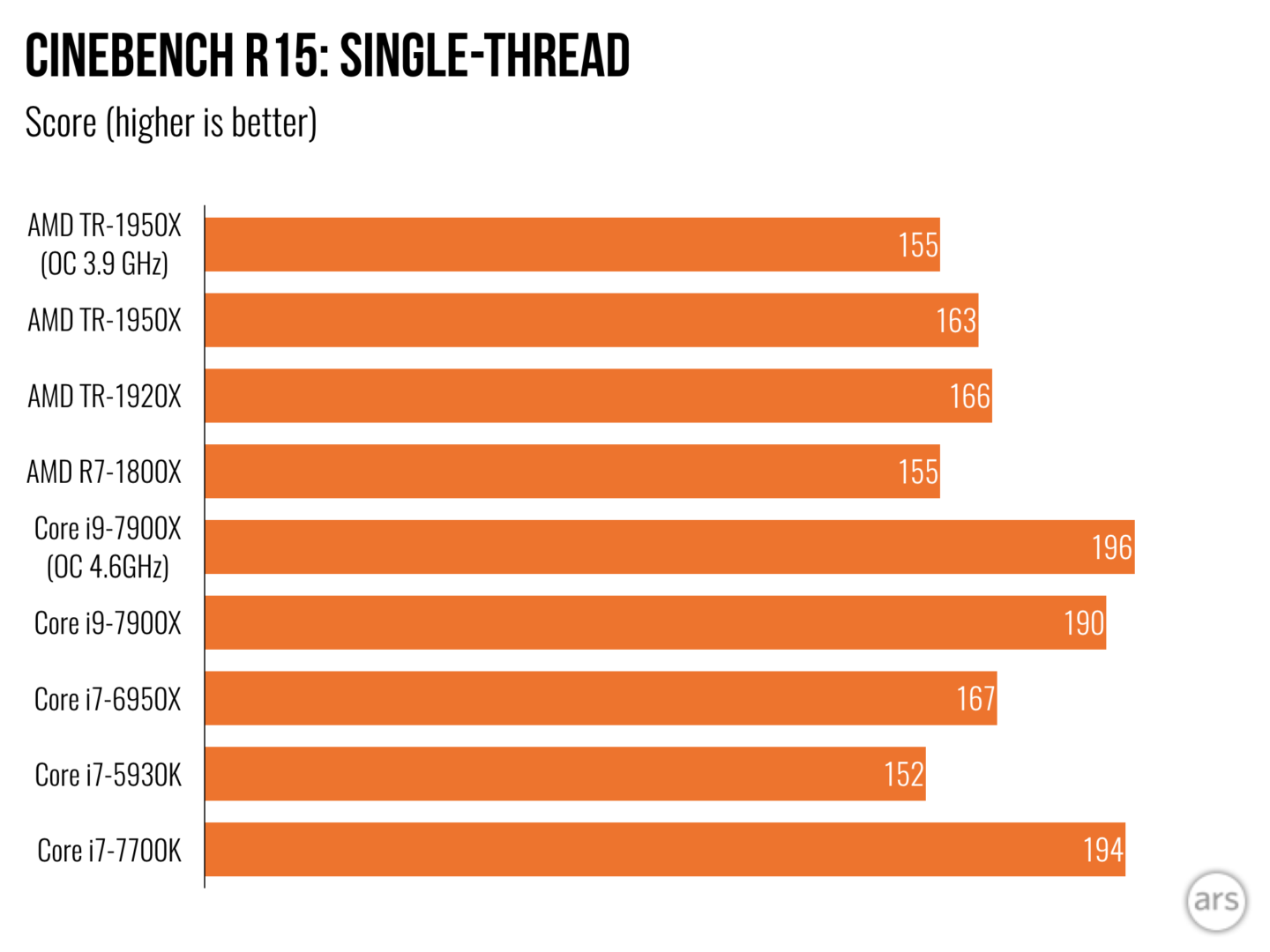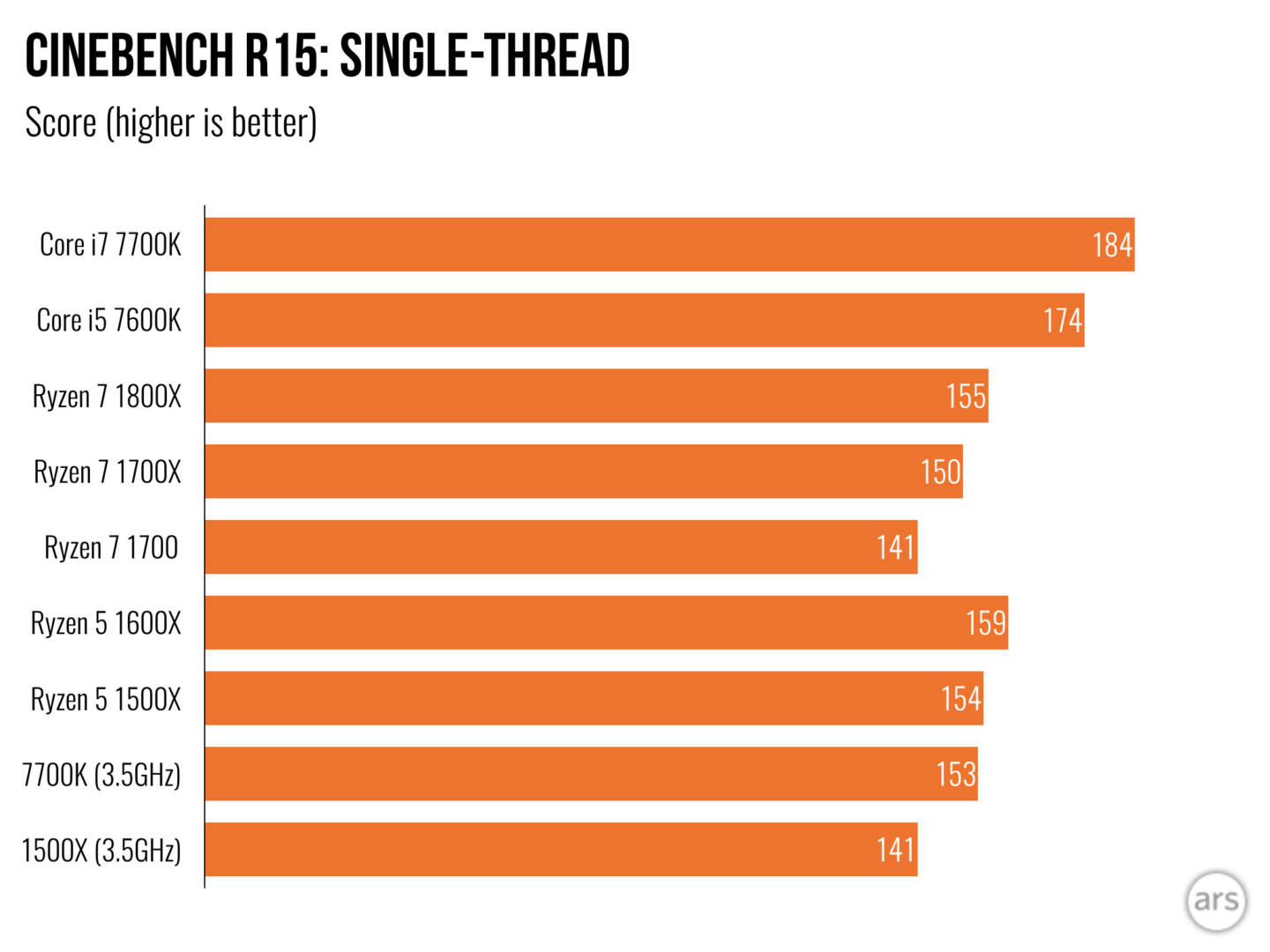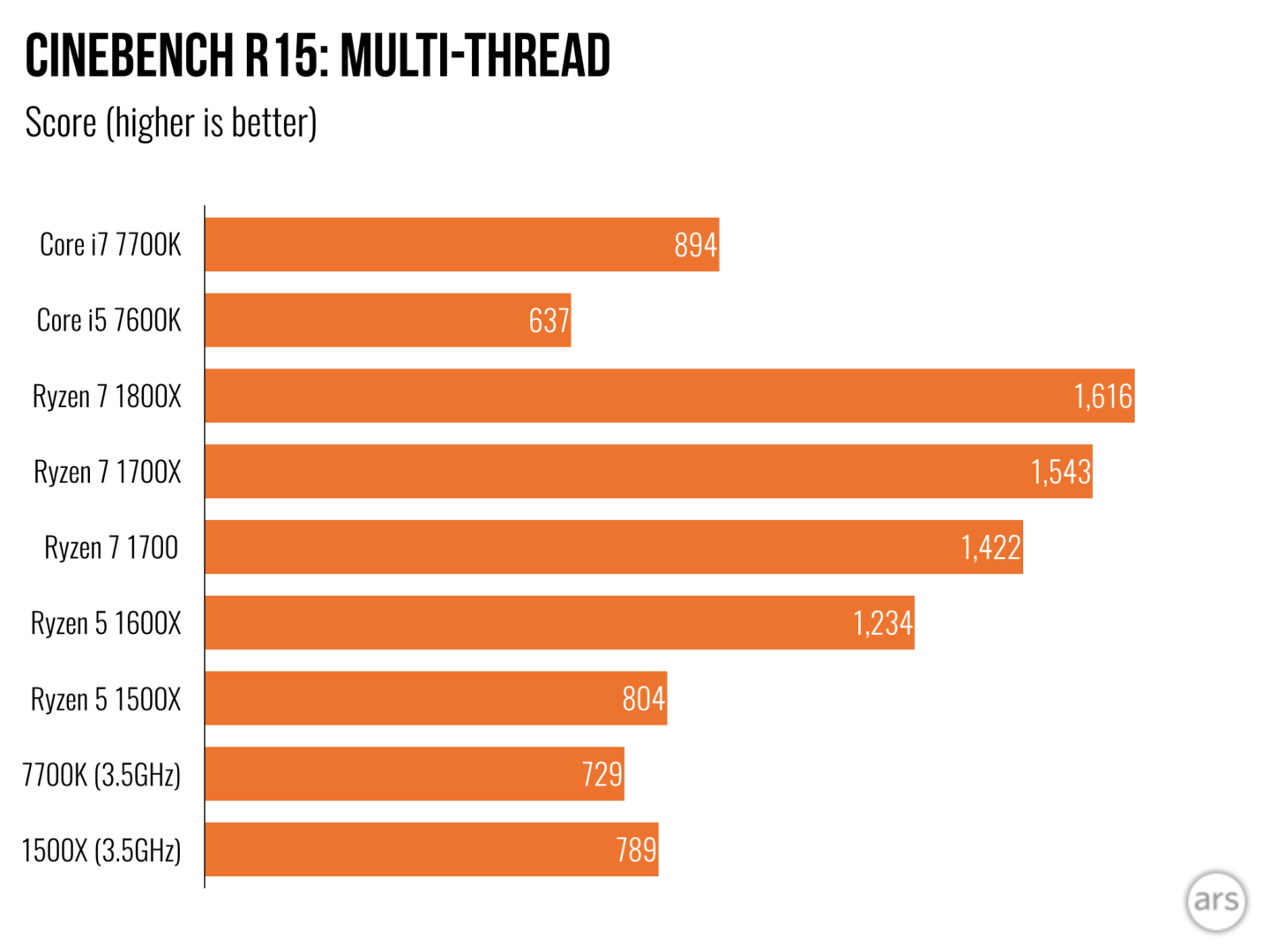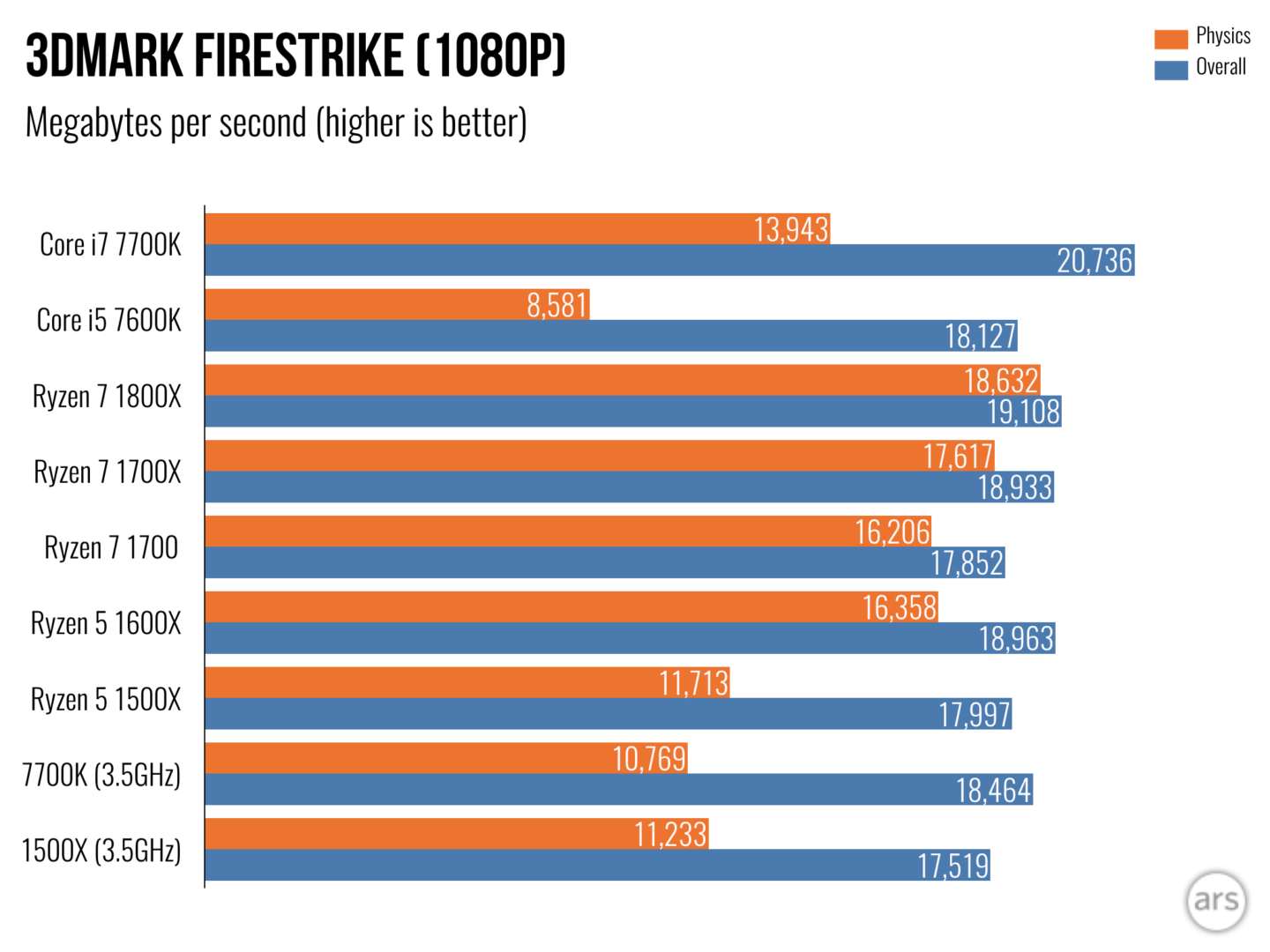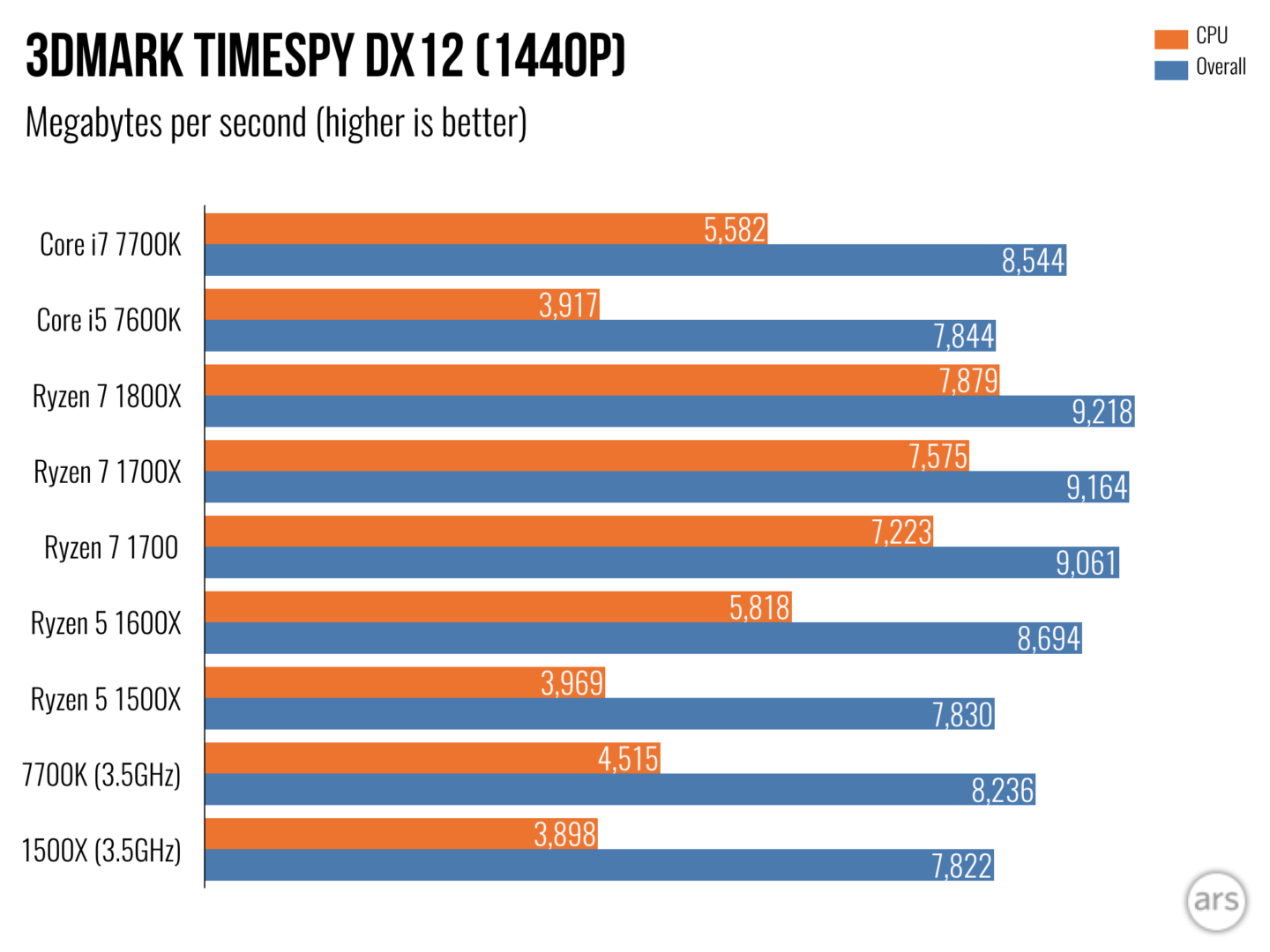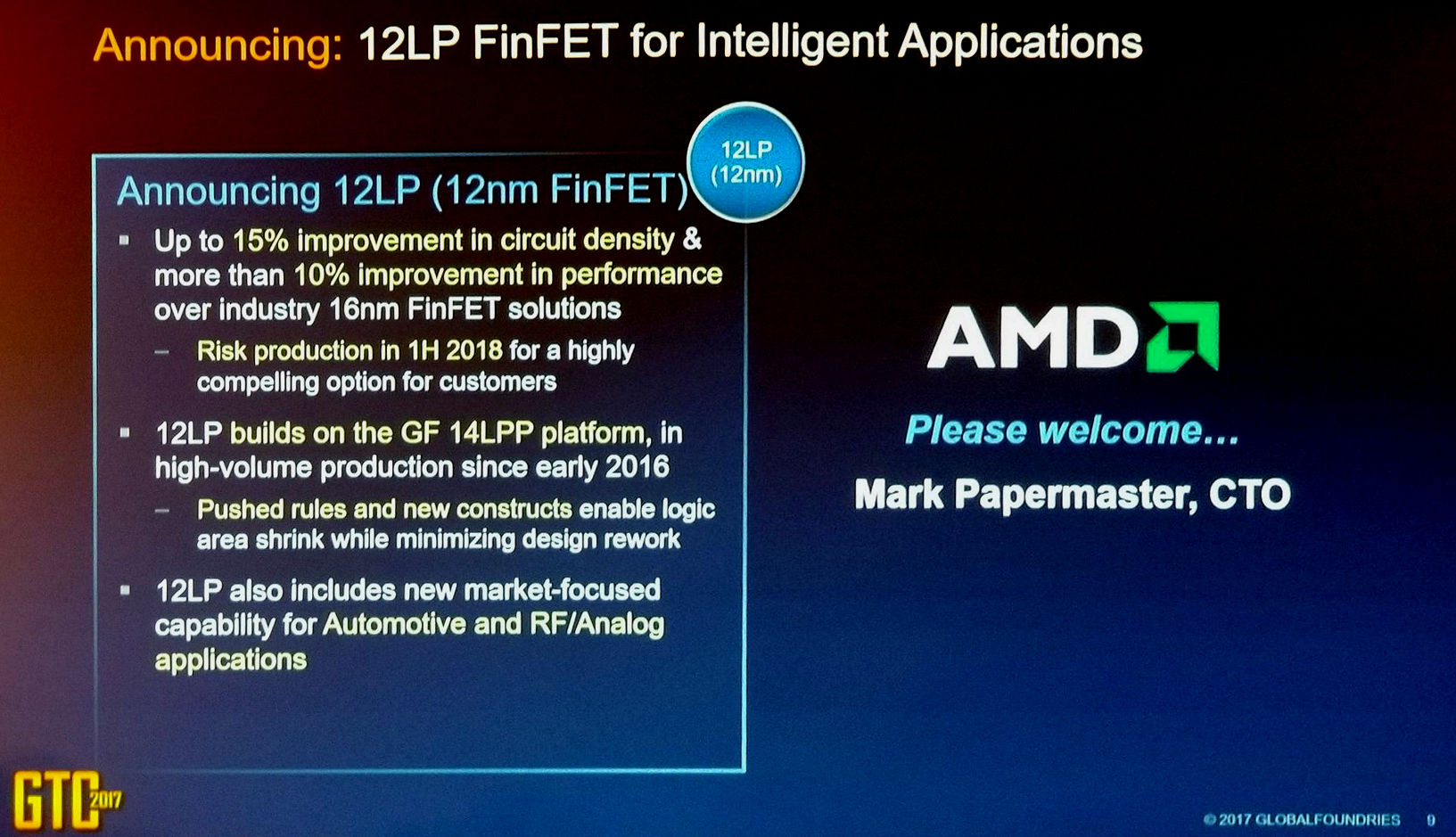The SMT implementation is different. You show that very well will pictures. Simplified all computing is going to have trade-offs depending on what you are trying accomplish. And then you gain IPC through uArch improvements/software optimization to perform certain tasks, or "tuning" if that is what we want to call it. I've mentioned this before in this thread with measurements look at the single thread and multi-thread test.:
http://www.tomshardware.com/forum/id-3327589/amd-ryzen-megathread-faq-resources/page-41.html#20123237
-8.5% 1500X@3.5GHz vs 7700k@3.5GHz
+8.2% 1500X@3.5GHz vs 7700k@3.5GHz
+4.3% 1500X@3.5GHz vs 7700k@3.5GHz in Physics showing Ryzens superior number crunching vs. Intel
-5.3% 1500X@3.5GHz vs 7700k@3.5GHz overall
But look at the 7600k with a base clock of 3.8GHz, which is 8.5% faster than the 1500X
+30.9% 1500X@3.5GHz vs 7600K@3.8GHz
-3.4% 1500X@3.5GHZ vs 7600K@3.8GHz
-5.2% 1500X@3.5GHz vs 7700K@3.5GHz overall
But look at the 7600k with a base clock of 3.8GHz, which is 8.5% faster than the 1500X
0.2% 1500X@3.5GHz vs 7600K@3.8GHz overall
This is first generation Ryzen, it will undoubtedly take years to optimize uArch/software to improve performance with all application. Some synthetics show a lot of raw performance that isn't being utilized by programs. AMD developed Ryzen chips to have superior multithreading clock for clock, by virtue of their implementation of SMT, which you illustrate very well with pictures. AMD also advertised that, and that is what it was trying to accomplish. Ryzen's 1800X($450) was made to compete with Intel's 6900X($1,100) which it did compete against very well despite only having dual channel RAM. The 1700 is arguably the much better buy because it was only about couple hundred MHz difference in processor speed overlocked, which could be bought for $310 and came with a cooler capable over overclocking to 3.8GHz. This is what made Ryzen so amazing.

